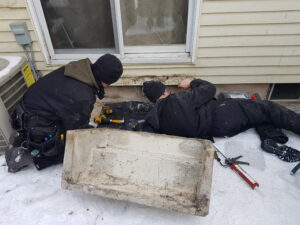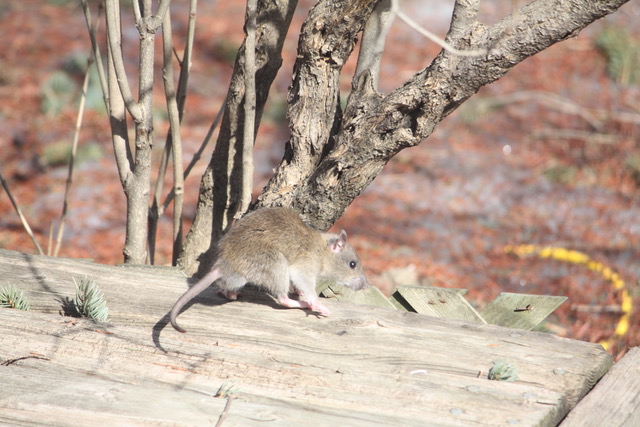Around your property, you might notice various holes and cracks. While some of these might be the natural shifting of the earth, some might be the entry point for a rat’s habitat. Although some of these creatures seem cute and cuddly, you need to remember they’re wild. You should never approach any wild animals, including rats. How do you know if you have a rat problem and need wildlife control Kitchener services if you haven’t seen an actual rat?
The Burrow
You might wonder whether a rat will burrow under concrete, and the answer is “yes!” If you have seen holes around your foundation, under a cement slab on the property or heading beneath any rocks, there’s a high likelihood you’ve got rats. In their burrows, they create comfy little homes to nest down. When they need food, they sneak out but don’t often go too far. This is why they burrow around homes. Without realizing it, we often give them access to everything they need to survive, simply by throwing out the trash or feeding our outdoor pets.
A rat burrow isn’t typically going to run much longer than 18 inches, though they have been found to be around 3 feet. Rats don’t need much room, so it’s not a huge opening you’ll be looking for when you’re curious about a rat burrow near your home. A rat can easily squeeze into a space only 2 to 4 inches wide.
Rat Activity
There’s a chance you have seen a burrow, but there is no current activity. This could mean the rats have moved on to a new colony elsewhere, though this could be more rare than it is common. To check whether the burrow is currently active with a rat colony, the entrance can be partially collapsed. If it is dug back out shortly after it has been collapsed, you can reasonably assume there are rats living there.
Other Entrances
If a rat needs a place to nest and cannot burrow under a rock or concrete, it will find a way into your home in another way. Many burrows also have secondary exits, and that might not be a burrow hole, either. If a rat is able to get into your home, you could find holes between floorboards, in dark closet corners, in bricks or in rotten tile. Rats sometimes use water pipes or gas pipes to gain access to your home, and a nice, cluttered area is a great place for them to nest.
What To Do
 Whether you’ve seen the rats, have seen their droppings, have heard them inside your walls or have seen their burrows, you need to take care of the issue as soon as possible. Rats will gnaw on things, including the wood of your home’s frame, electrical wires and other components of your home. They also leave droppings, which is a process known to transmit dangerous diseases to humans and their pets.
Whether you’ve seen the rats, have seen their droppings, have heard them inside your walls or have seen their burrows, you need to take care of the issue as soon as possible. Rats will gnaw on things, including the wood of your home’s frame, electrical wires and other components of your home. They also leave droppings, which is a process known to transmit dangerous diseases to humans and their pets.
If you have a rat problem, you should never approach them. Setting a trap might get rid of one or two, but rat colonies can be numbered up to 100 as long as they have access to plenty of food. Professional wildlife control services in Kitchener are essential in this situation. Skedaddle Humane Wildlife Control has the techniques, the tools and the know-how to rid your home of rats for good, so it’s important you keep your distance and call in the professionals.
Getting Started
A rat burrow is a clear sign you are dealing with wildlife, but you should never approach the situation on your own. When you suspect a rat infestation in your home, contact the professionals at Skedaddle Humane Wildlife Control at 519-658-4400 for humane removal services. Detecting even the smallest rat holes, we’ll make sure the job gets handled right.



